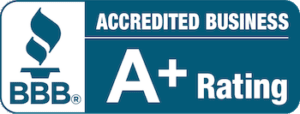It is crucial to distinguish between the legal description of a note and mortgage when purchasing a home. While they serve the same purpose of securing a loan for buying a property, they are distinct in their operation and have different legal implications. The difference will be explained in this article as well as the role played by these legal documents used in real estate transactions.
Fundamentally, a promissory note is a legal document written by the borrower promising to pay back the loan taken whereas a mortgage is a contract where one’s house is used as collateral for borrowing money. Understanding these differences would make it easier for you to go through your mortgage journey feeling more confident and comfortable.
Mortgage and Promissory Note Basics
In real estate transactions, there are two main key documents; mortgage and promissory notes. Even though both operate within the other legal documents paradigm, each of them detail various parameters implicated by the whole home purchase or loan contract. Being aware of their functions is helpful in proper management of one’s mortgage.
The promissory note itemizes the borrower’s commitment and personal obligation to return borrowed money including such things as principal amount, interest rate and time stipulated payment methods among others whereas on the contrary a mortgage serves as an assurance to the borrower’s written promise to the lender that in case there is default in repayment obligations from the side of the borrower there exists security interest over the property.
What Is a Mortgage Loan?
Mortgage loans are an important financial mechanism that most people use to acquire property without having to pay the entire cost at once. Therefore, whoever borrows commits to paying back this debt collected over a period normally through monthly installments.
Mortgages have distinct terms like interest rates, down payments, maturity periods and all these can affect the total repayment figure. In order to make sound borrowing decisions, borrowers need to grasp these terms.
What Is a Promissory Note?

A borrower and a lender sign a promissory note to show that in case of default the former must repay a certain lump sum amount of cash at a given period. It is a document that can be taken to court whenever the borrower does not honor his or her own signed promise to repay it.
Essential information contained in the notes are: amount lent out, interest rates charged on borrowed amount, when it should be paid back and the day agreed upon for that purpose. Therefore it is mandatory for either party to grasp what they are expected to do or have in terms of legal issues related to loans through written agreement on this.
Key Differences

Every person who wants to take a loan should remember that mortgage and promissory notes differ significantly.
- A loan is secured by a mortgage while a loan is detailed in a promissory note.
- Foreclosure is an option available to banks when a borrower fails to pay back.
- Unlike mortgages, promissory notes are easily transferable.
- Please note that while mortgages are recorded publicly, promissory notes are not.
Mortgage vs. Promissory Note
The lending arrangement usually combines mortgage with a promissory note; however, they have distinct purposes. The mortgage secures the loan, while the other mortgage or promissory note itself is a commitment from the borrower to repay the loan.
While the promissory note gives an outline of the loan amount and all necessary details concerning the loan such as the repayment schedule, monthly payment plan, interest rate, etc., the mortgage shows information about real estate security interest. These two documents are needed for both lenders and borrowers to protect their interests.
How Mortgages and Promissory Notes Are Used

Mortgage and mortgage promissory note, are essential elements in the house buying and foreclosure process here. The promissory note signifies the debtor’s debt whereas the mortgage secures this debt using the house as collateral.
Basically, the borrower signs both the promissory note to admit the loan and the mortgage to give the lender a stake in the real property itself. Both these papers provide guarantees that make it possible for the creditor to get back his money if the lender holds any other party violates the deed of trust contract.
Mortgage and Promissory Note Relationship
Real estate financing relies on the relationship between a mortgage and a promissory note. The loan terms are stated in the promissory note while the mortgage offers security.
The two documents together form a legal agreement that guarantees the borrower will pay back the loan. Unless the borrower pays back the new mortgage in full as agreed by a legally binding agreement, the lender can take possession of the property by utilizing the legal power stated in the mortgage.
When Is a Mortgage and Promissory Note Used?

It is almost always necessary to have both a mortgage plus promissory note to complete such transactions as purchase of a residential property. This is essential for all individuals that need loan facilities to own house purchase land through borrowing from lenders.
In scenarios that involve refinancing, the same paperwork is required as well as changes in loan terms. The right application of these ‘tools’ and financial tools will greatly assist borrowers to cope with their money commitments more efficiently.
Transferring Loans and Documents
Loan documents, more often than not not mortgage and promissory notes, may be passed around among creditors. Through this transferral process, the new creditor takes over rights and responsibilities that came with the original loan accord.
Within these, the transfer could take place at the secondary market where loans can be bought or sold. This practice is widely embraced within the context of mortgages, thus enabling mortgage lenders themselves to remain solvent.
What Is a Mortgage Assignment?

Many times, the assignment of mortgages comes about when the mortgagee decides to pass his or her interest in the property to another person. This can be found in most County Land Records.
Assignments normally happen after loan sales have been made in secondary markets. If at all something unfortunate happens, the latest note holder can always enforce the conditions of the loan agreement by using foreclosure proceedings initiating a foreclosure case.
How Promissory Note Endorsements Work
Endorsement of promissory notes enables the initial lender to introduce one more party into the bond. This operation often involves attaching a document of endorsement or signing the reverse side of the promissory note vs it.
In the secondary market, the ease with which loan can be sold or transferred is made possible through endorsements.
The newly assigned person for example would take over such responsibilities as getting money from borrowers then enforcing what was agreed upon concerning such as monthly payments made.
What Happens If I Pay Off the Loan in Full?

For any debtor, paying off a loan in full is an important achievement. By doing this, such an individual would be legally responsible and be relieved of any other legal obligation made under the promissory note.
In return for mortgage payments, the lender would normally remove the mortgage lien from the property in question after receiving their final installment. A commentary is then made in county land records that reflect that the borrower is now in full ownership of the land.
The Importance of Monthly Payments
To continue your mortgage, it is necessary to make the same payment every month which will help decrease the amount you owe on your loan due to regular repayments that include reducing the outstanding balance and paying off interest rates.
Failure to do so has severe repercussions such as overdue charges and probable seizure of your house. Proper planning for financial resources is, therefore, essential so that one can afford all these monthly bills.
How Interest Rates Affect Your Loan
In any mortgage loan, interest rates are very crucial because they determine the amount you will end up paying up until completion date making them an insurance part of your monthly payments.
When it comes to interest rates ,the higher they are the more you will have to pay every month plus incur more costs. By knowing how these things happen, you can therefore manage your mortgage better
The Borrower’s Responsibilities

As a borrower of home loans, there are specific things you need to do. Just making sure you pay on time each month is part of it. Another thing that needs your attention is following the rules spelled out in the home loan agreement and note of promise to pay back money.
Keeping in touch with your lender and dealing with any money problems quickly may prevent severe problems such as losing the property. Knowledge of the obligations will lead to a fruitful home ownership journey.
What Happens to the Mortgage Note?
When the payment amount on a mortgage has been fully paid back, the note gets marked as “paid” and handed back over to the borrower- meaning he has done all it required of him.
By the way, the mortgage lender gives out satisfaction of the mortgage document that is simply an instrument showing that the claims on the property have been done away with. It tends to be recorded at the land records office within the area where such property lies.
Conclusion

In real estate, understanding notes and mortgages is important. The borrower’s promise is represented by promissory notes, while the loan is secured by mortgages by the property owner. Both act to protect the interests of those involved in financial transactions.
Being comfortable with the functions as well as roles played by each document can make potential homebuyers go through this process easily without court cases that may arise unexpectedly.
Interested parties should approach their financial advisors or real estate experts for further clarifications concerning their mortgaged property or mortgage notes themselves.





























